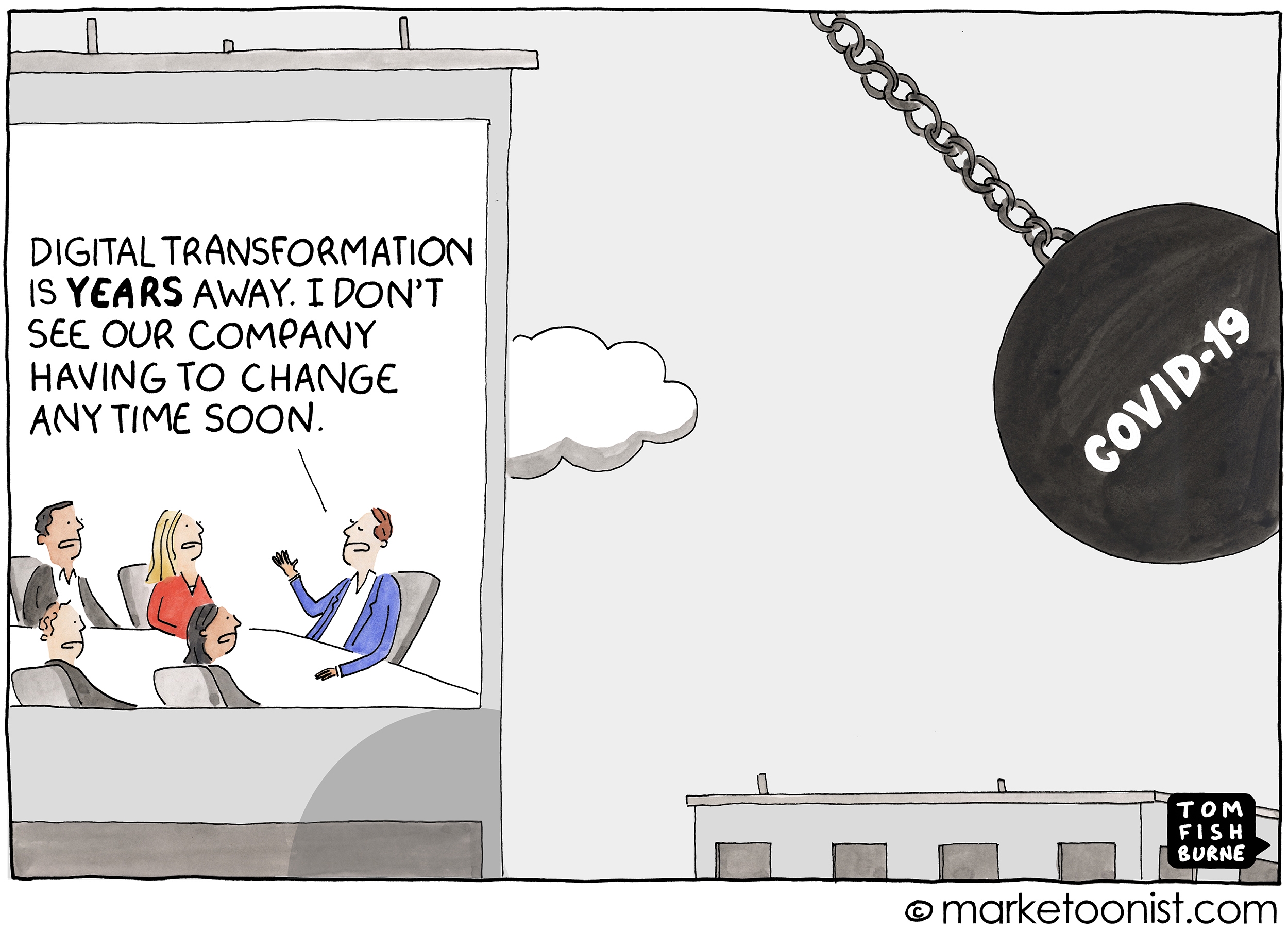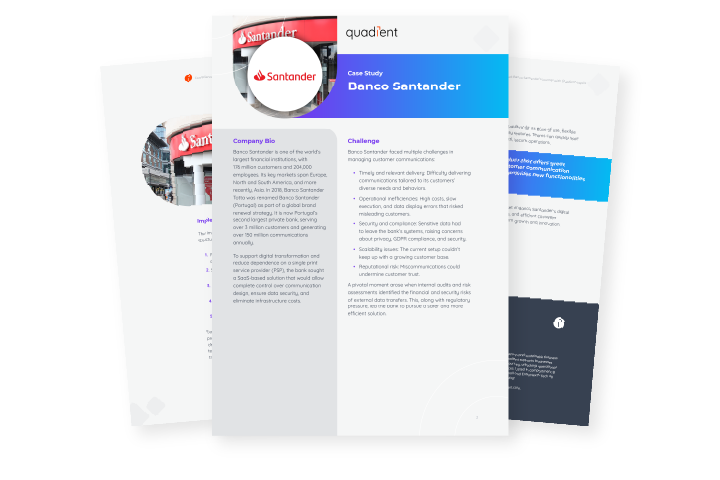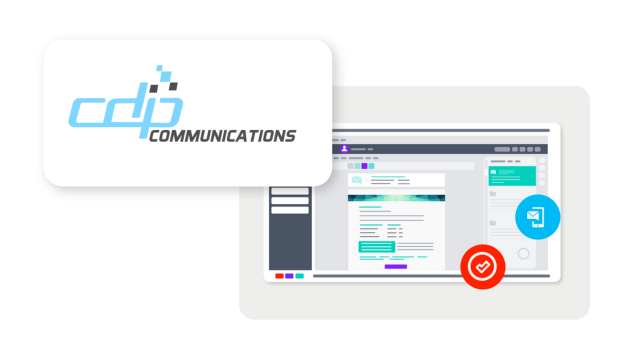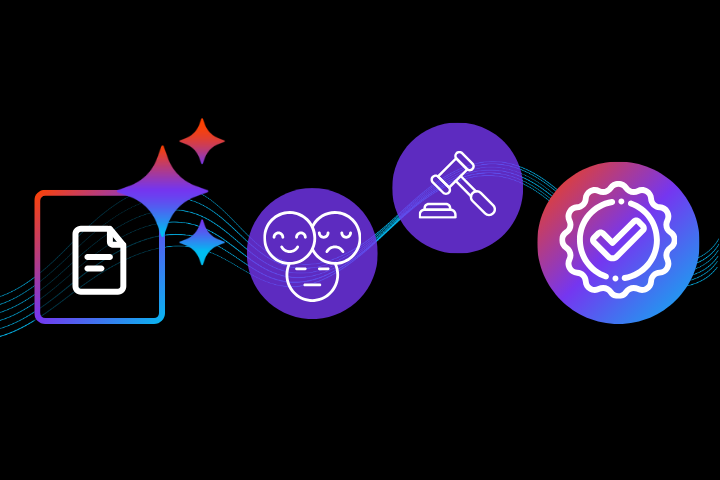

Reflection is natural at a time like this. Many of us are reflecting on changes we’d like to make in our lives when this is all over. We’re thinking about how we might alter our consumption habits, or how we’ll take measures to minimize our impact on the environment. How we will spend less time rushing from activity to activity and spend more quality time with family. How we will appreciate the simple things just a little bit more.
Correspondingly, many organizations are beginning to reflect on what has worked for them during this time of crisis, and what hasn’t. How they might change their processes and tools in order to better enable their mobile workforce. What investments they must make in order to continue to support their customers now, and better engage with them in the future.
When the crisis hit, the necessity for digital communications intensified.
As an example, Quadient noted a 30% increase in the number of email communications sent out by our customers in the month of March, as compared to the previous year.
In a recent vlog, Kaspar Roos, CEO and Founder of Aspire, notes that as a result of needing to rapidly shift to digital communications in recent weeks, many enterprise organizations with legacy core systems and out-dated customer communications management technologies are struggling to enable their staff to remotely access, edit, and send compliant customer communications across digital channels.
A telling example of this, was a recently published news article entitled “Wanted urgently: people who know a half century-old computer language so states can process unemployment claims” from the state of New Jersey. According to the article, “Despite a dwindling number of COBOL programmers, a 2017 report by Reuters found that there are still 220 billion lines of COBOL in use today. 43% of banking systems built on COBOL and 95% of ATM swipes rely on COBOL code.”
Aspire asserts that the current crisis has exposed the need to accelerate digital transformation activities across many enterprise organizations.
“Out of this (and I’m convinced of this), what will happen is an accelerated push to digital transformation. A lot of organizations are now realizing the limitations that their current infrastructure has on their business” says Roos.
How did we get here?
So, why can’t large enterprises adapt as quickly as their digital-first / start-up counterparts? The answer is simple.
Many traditional industries including financial services, healthcare, insurance, utilities, telco, and the public sector have a complex infrastructure of mission-critical legacy IT technology — old systems that were developed 15 to 20 years ago for print-centric output only.
Year by year, project by project and trend by trend, many enterprise organizations have assembled a large collection of communication systems. The more customers, communication channels, products, and services an organization has, the more likelihood there are many systems — both legacy and modern — in place to manage it all. The rapid introduction of new communication technologies has led to organizations adopting one-off tools to handle the output. Additionally, for many organizations, mergers and acquisitions has lead to a greater number of IT tools and platforms to manage. The result is an infrastructure of software, hardware, and business rules that require a lot of care.
For many organizations, this has generated high costs associated with the duplication of efforts across departments, channels, and business / technology silos, increased compliance risk, brand inconsistency, high upgrading and maintenance costs as well as a poor customer experience.
For several years, customer preference demands, and a constantly changing communications landscape, have been driving enterprises to rethink how they manage customer communications. The current crisis has brought these inadequacies to the forefront.
Accelerate digital transformation, starting today
Arguably the biggest challenge for managing communications is the lack of standardized management or a holistic strategy.
Enterprises that have invested in a centralized end-to-end customer communications management (CCM) platform to design, manage, and deliver omnichannel customer communications have been able to realize the following benefits:
- Increased operational efficiency
- Streamlined processes and elimination of organizational and digital silos
- Consistency in brand image and messaging
- Reduced compliance risk
- Cost savings
- Improved time-to-market
- Improved CX
Today, it’s paramount that CCM technology integrates with existing core systems, enabling a seamless omnichannel experience through one easy-to-use interface. This way, organizations don’t need to upgrade their existing legacy core systems to achieve their digital transformation goals.
However, it’s important to note that technology migration is sometimes a complex undertaking. But it doesn’t have to be.
When embarking on your migration effort, it’s imperative you select a CCM technology provider with proven tools, methodologies, and processes that focus on value delivery. Quadient’s migration technology, as an example, applies artificial intelligence, machine learning, and natural language processing to the time-consuming problem of retiring legacy customer communication systems, saving thousands of person-hours.
Quadient’s Professional Services Organization follows a proven migration methodology that encourages end userempowerment for content management, enablement of digital presentment, and reusable components that change the way organizations approach content creation and maintenance.
Leading enterprises have started, and even completed, communication transformation projects faster than they believed possible.
Contact us now to find out how you can accelerate your digital transformation today.





